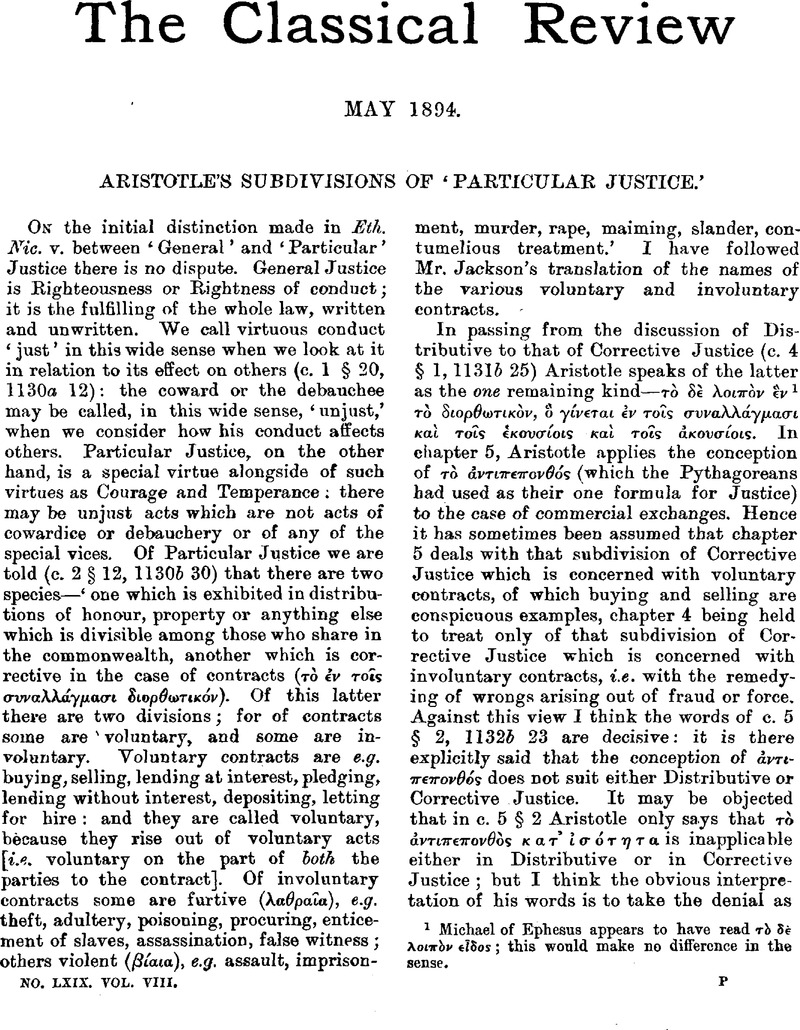Article contents
Aristotle's Subdivisions of ‘Particular Justice.”
Published online by Cambridge University Press: 27 October 2009
Abstract

- Type
- Review Article
- Information
- Copyright
- Copyright © The Classical Association 1894
References
page 185 note 1 Michael of Ephesus appears to have read τ⋯ δ⋯λοιπ⋯ν εῑδος this wonld make no difference in the sense.
page 186 note 1 Mr. Jackson has pointed ont the error of the traditional diagram of a parallelogram with diagonal lines drawn. See his edition of the Fifth Book of the Ethics, p. 95.
page 191 note 1 It is interesting to note that, in opposition to the traditional view about Aristotle's subdivision of Particular Justice into Distributive and Commutative, Pufendorf (De Jure Naturae et Gentium, i. c. 7 § 12) holds that Aristotle has three species of Particular Justice, but recognizes a difference between the first two (Distributive and Corrective) and the third, which he calls simply τ⋯ ⋯ντιπεπονθ⋯ς, retaliatio; the first two both rest with the public authority to administer, the third either with private persons or public authorities. I may add that I had adopted my theory about Eth. v. 5 before knowing of Pufendorf's remarks.
page 191 note 2 It should be noted, however, that Aristotle seems only to refer to the κοιν⋯ς ν⋯μος as a generally received notion, which may, when it is convenient, be used as a rhetorical commonplace: ‘No case, talk about the law of nature and quote the Antigone’ (Rhet. i. 15. 1375a 27 seq.).
- 26
- Cited by


